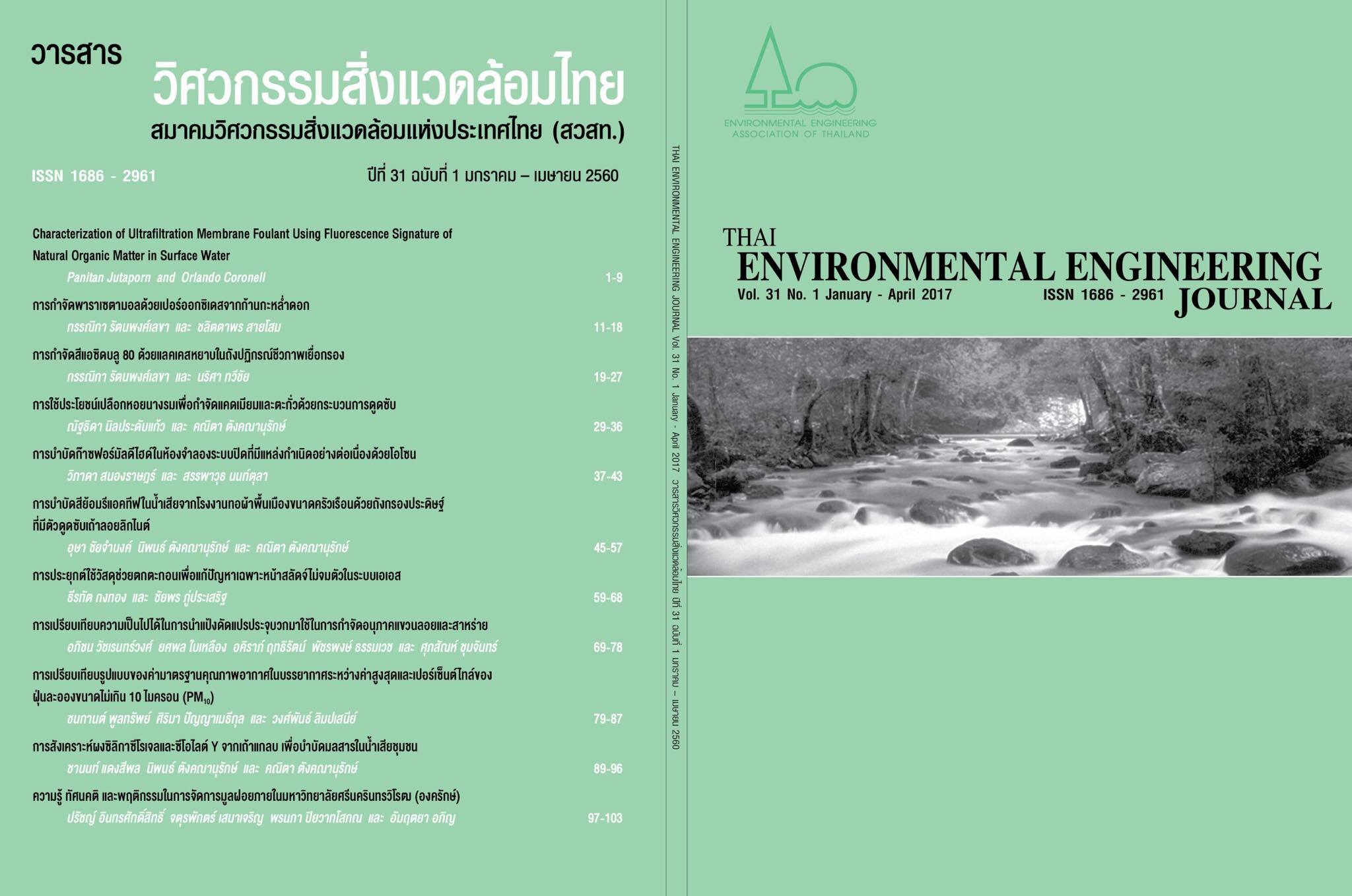Treatment of Gaseous Formaldehyde with Continuous Source in a Closed Modeling Room Using Ozonation
Main Article Content
Abstract
This research aims to study the treatment of gaseous formaldehyde in a closed modeling room with continuous source using ozonation. The kinetics study of formaldehyde treatment was also included in this work. Gaseous formaldehyde was prepared from analytical grade formalin in a glass preparation room with the dimension of 1.15 x 1.15 x 1.15 m3 which is directly connected to the glass modeling room with the dimension of 1.2 x 1.2 x 1.8 m3. The glass reactor with the dimension of 25 x 40 x 15 cm3 was installed in the modeling room. Factors affecting the treatment of gaseous formaldehyde studied included initial concentration of formaldehyde and dosage of ozone. The initial concentrations and ozone dosages were varied as 5, 7.5, 10 and 15 ppm and 300 and 1,000 mg/hr, respectively. The air flow rate was set at about 5 L/min and the treatment time was around 170 min. Results from treatment efficiency of formaldehyde revealed that at 5 ppm formaldehyde initial concentration and ozone dosage of 1,000 mg/hr yielded the highest efficiency of 100%. The kinetics of formaldehyde treatment follows the zero order reaction.
Article Details
References
[2] Jatuporn Sakulteiw and Oranut Tangyotwilai. 2012. Quantity of Gaseous Formaldehyde in the Gross Anatomy Laboratory, Ubon Ratchathani University. (in Thai)
[3] Adul Bandhukul (Author). Wilawan Juengprasert and Surajit Suntorntham (Editors). 1999. Occupational Medicine, Toxicology; Formaldehyde, Bangkok:
Cyber press, 145-150. (in Thai)
[4] Bureau of Environmental Health, Department of Health, Ministry of Public Health. 2012. Academic Manual: Volatile Organic Compounds in Atmosphere,
1st edition, Bangkok: WVO Office of Printing Mill, The War Veterans Organization of Thailand under Royal Patronage of His majesty the King. (in Thai)
[5] Horvath, M., Bilitzky, L. and Huttner, J. 1985. Ozone. Budapest : Elsevier.
[6] Jia Wei Li, Kuan Lun Pan, Sheng Jen Yu, Shaw Yi Yan and Moo Been Chang. 2014. Removal of formaldehyde over MnxCe1−xO2 catalysts: Thermal catalytic oxidation versus ozone catalytic oxidation. J. Environ. Sci. 2003-2010.
[7] Provincial Electricity Authority (PEA), accessed in December 2016. http://www2.eppo.go.th/power/pw-Rate-PEA.html#6
[8] Pollution Control Department, Ministry of Natural Resources and Environment, accessed in December 2016.
http://www.pcd.go.th/info_serv/Datasmell/design_oxidation.htm
[9] Jittree Palakun. 2009. Adsorption of Formaldehyde Vapor on Activated Carbon Derived from Rice Husk, Chulalongkorn University. (in Thai)


